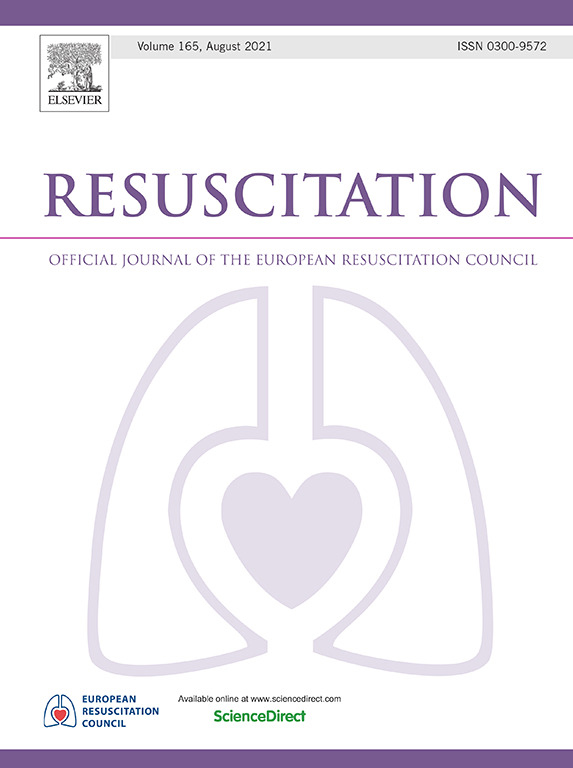The peak end-tidal carbon dioxide concentration recorded during cardiopulmonary resuscitation as an indicator of survival: a nationwide cohort study of pediatric out-of-hospital cardiac arrests
IF 6.5
1区 医学
Q1 CRITICAL CARE MEDICINE
引用次数: 0
Abstract
Background
Although the end-tidal carbon dioxide concentration (ETCO2) recorded during resuscitation has been reported as an indicator of survival in a few studies of pediatric in-hospital cardiac arrest, the relationship between ETCO2 and survival in pediatric out-of-hospital cardiac arrest (OHCA) has not previously been investigated (particularly with regard to the cause of the OHCA). This study aimed to determine whether quantitative measurement of ETCO2 during resuscitation is predictive of survival in cases of pediatric OHCA.
Method
This nationwide, population-based cohort study analyzed data from the French RéAC OHCA registry, including all patients under 18 years of age with trauma-related OHCA or medical OHCA from 2011 to 2023. The highest ETCO2 value was recorded during advanced cardiopulmonary resuscitation. The main outcomes were return of spontaneous circulation (ROSC) and day (d)30 survival. Discriminant ability was evaluated using the area under the receiver operating characteristic curve (AUROC), and the Youden index was used to determine the optimal ETCO2 cut-off value.
Results
A total of 1209 pediatric OHCAs (226 (19%) trauma-related and 983 (81%) medical) were included. The victims’ median [interquartile range] age was 6 [0;14] years. ROSC was achieved in 347 (29%) cases and d30 survival was achieved in 61 (5%) cases. In both trauma-related and medical OHCAs, the peak recorded ETCO2 value was higher in patients who achieved ROSC and in d30 survivors. The AUROC [95% confidence interval] for the highest ETCO2 that predicted ROSC and d30 survival were respectively 0.808 [0.745–0.872] and 0.854 [0.761–0.947] for the trauma-related OHCA group and 0.803 [0.774–0.831] and 0.732 [0.676–0.787] for the medical OHCA group. In both groups, the probability of ROSC and d30 survival increased with higher ETCO2 values, with optimal cut-offs of 21 and 29 mmHg for trauma-related OHCA and 27 and 26 mmHg for medical OHCA, respectively.
Conclusions
Further studies are necessary to clarify the use of ETCO2 in optimizing pediatric ALS.
在心肺复苏期间记录的潮末二氧化碳浓度峰值作为生存指标:一项关于儿科院外心脏骤停的全国性队列研究
虽然复苏期间记录的潮末二氧化碳浓度(ETCO2)在一些儿科院内心脏骤停研究中被报道为生存指标,但ETCO2与儿科院外心脏骤停(OHCA)的生存之间的关系此前尚未被调查(特别是关于OHCA的原因)。本研究旨在确定复苏期间ETCO2的定量测量是否可以预测儿童OHCA病例的生存。
本文章由计算机程序翻译,如有差异,请以英文原文为准。
求助全文
约1分钟内获得全文
求助全文
来源期刊

Resuscitation
医学-急救医学
CiteScore
12.00
自引率
18.50%
发文量
556
审稿时长
21 days
期刊介绍:
Resuscitation is a monthly international and interdisciplinary medical journal. The papers published deal with the aetiology, pathophysiology and prevention of cardiac arrest, resuscitation training, clinical resuscitation, and experimental resuscitation research, although papers relating to animal studies will be published only if they are of exceptional interest and related directly to clinical cardiopulmonary resuscitation. Papers relating to trauma are published occasionally but the majority of these concern traumatic cardiac arrest.
 求助内容:
求助内容: 应助结果提醒方式:
应助结果提醒方式:


